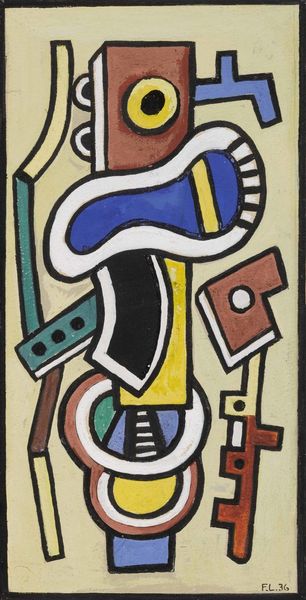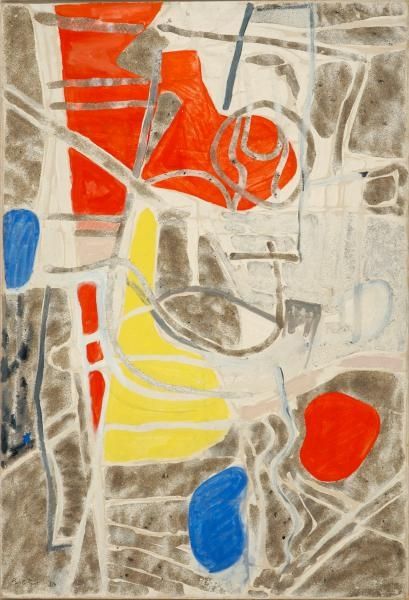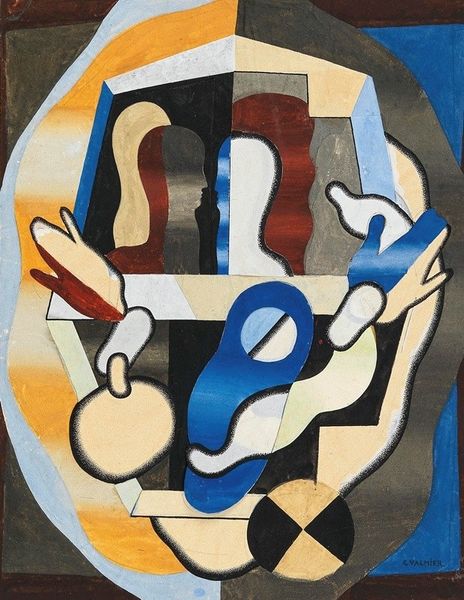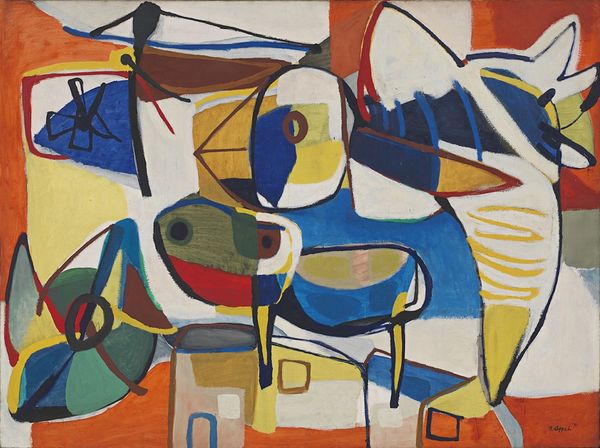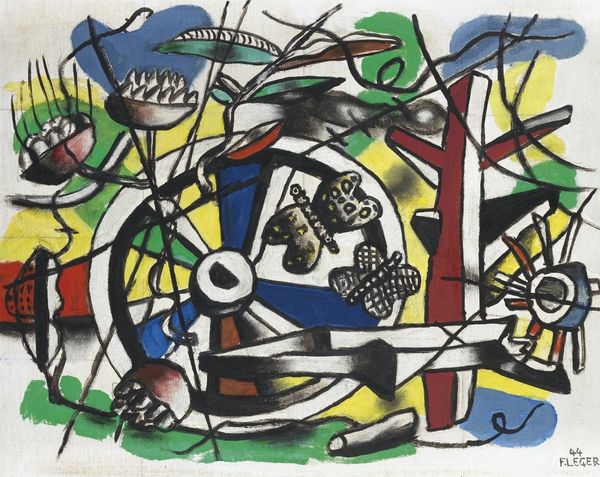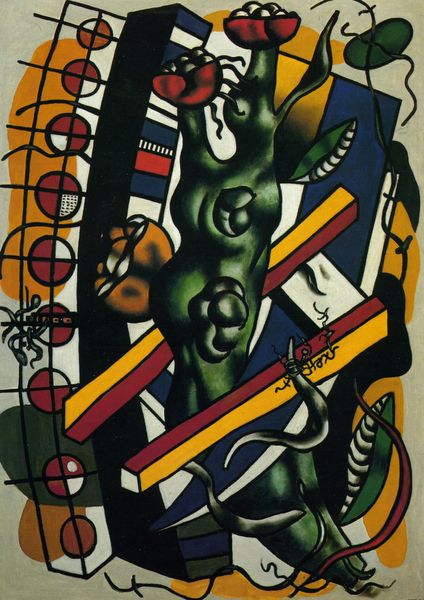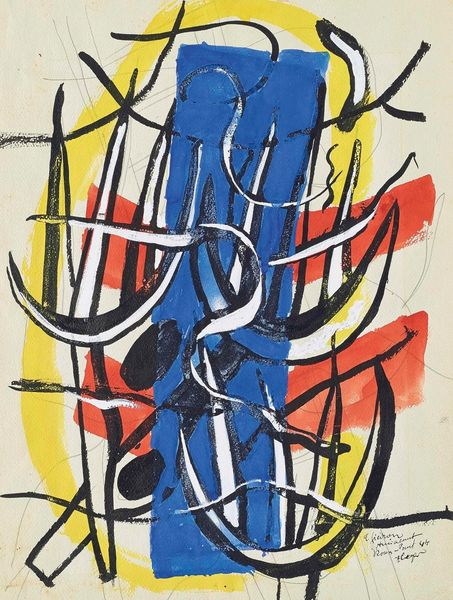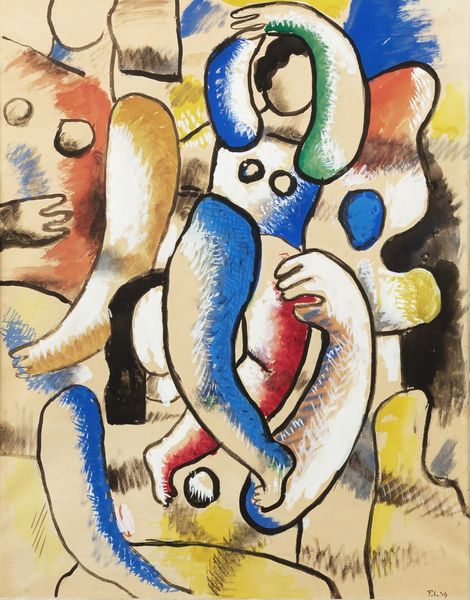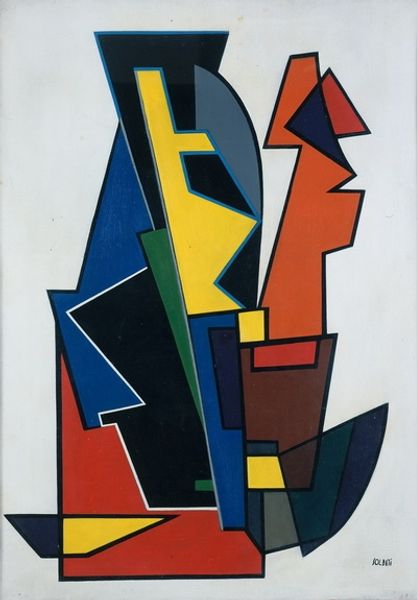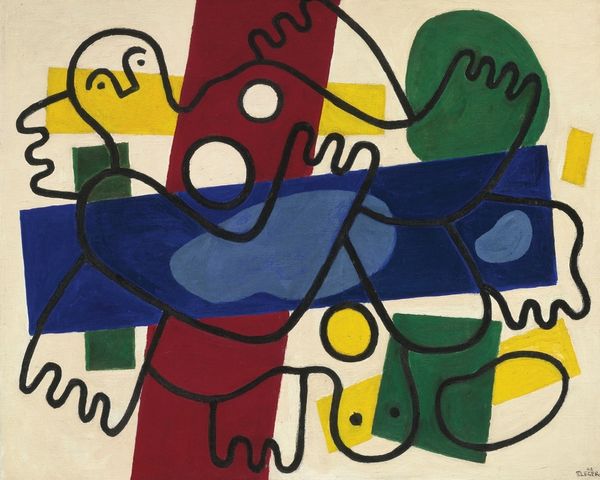
Copyright: Modern Artists: Artvee
Curator: Fernand Léger's 1947 oil painting, "Le linge qui sèche"—or, "The Laundry Drying"—strikes me as particularly evocative. What's your immediate response to it? Editor: Honestly? At first glance, utter chaos! Like someone exploded a laundry basket onto the canvas and then drew it from memory. But, hey, chaos can be interesting, right? It has these very distinct, flat shapes. Makes you think. Curator: That 'chaos,' as you call it, speaks volumes about the post-war period in Europe. Léger sought to depict a new visual order, reflecting a society rebuilding itself. The laundry—a symbol of domesticity—is abstracted, fragmented, presented as both familiar and utterly new. Editor: A new visual order… maybe. To me, it feels more like he was playing with forms, like a jazz musician riffs on a melody. I keep getting drawn back to the bold colors – they feel so optimistic, almost defiant against the dark background. Curator: Indeed. The color palette, with its strong primary hues, embodies Léger’s faith in the industrial age and its potential for a vibrant, accessible art. He believed art should be integrated into everyday life. You also get an interesting feeling because he combines the flat shapes, geometric shapes, and this more free expressionist visual design language. Editor: That explains why the geometric thing didn't completely do it for me. So the laundry is just a jumping-off point, right? It is for sure, and an excuse to smash some colors and shapes together. Is it about the work and the people that must toil to rebuild civilization after all those atrocities? You'd want that new world to look interesting too. I can feel a world of fatigue here also, somehow. Curator: Exactly. By taking mundane subjects like drying laundry, Léger aimed to ennoble the lives of ordinary people. Post-war Europe needed that encouragement in the new technologies of the day. I wonder if, a century from now, art history lectures will talk about how technology enables people and creates so much extra fatigue for them as well... Editor: Funny how these artists somehow show how people are really living more accurately than history itself! The artist may have created order through abstraction and flatness. Thanks for pointing out the art-historical context of it all for me to consider here.
Comments
No comments
Be the first to comment and join the conversation on the ultimate creative platform.


